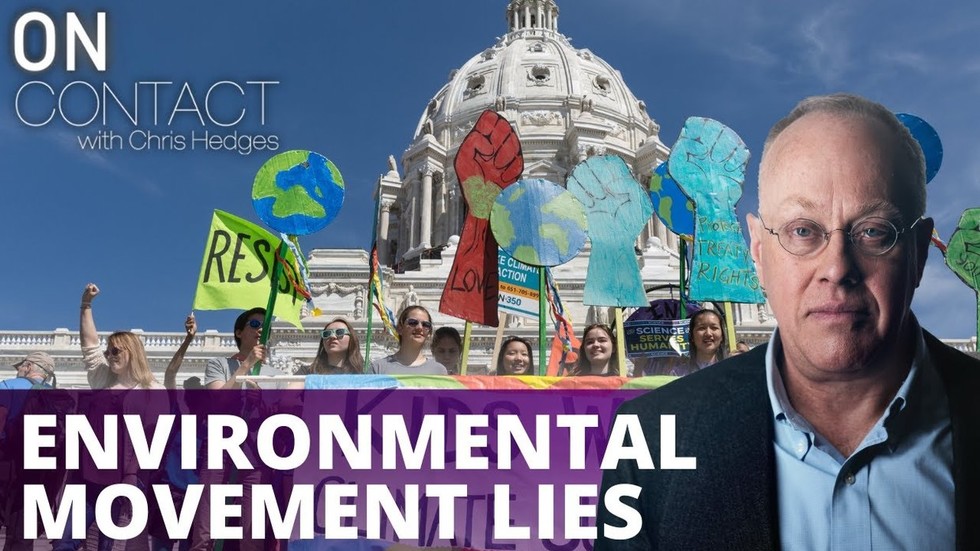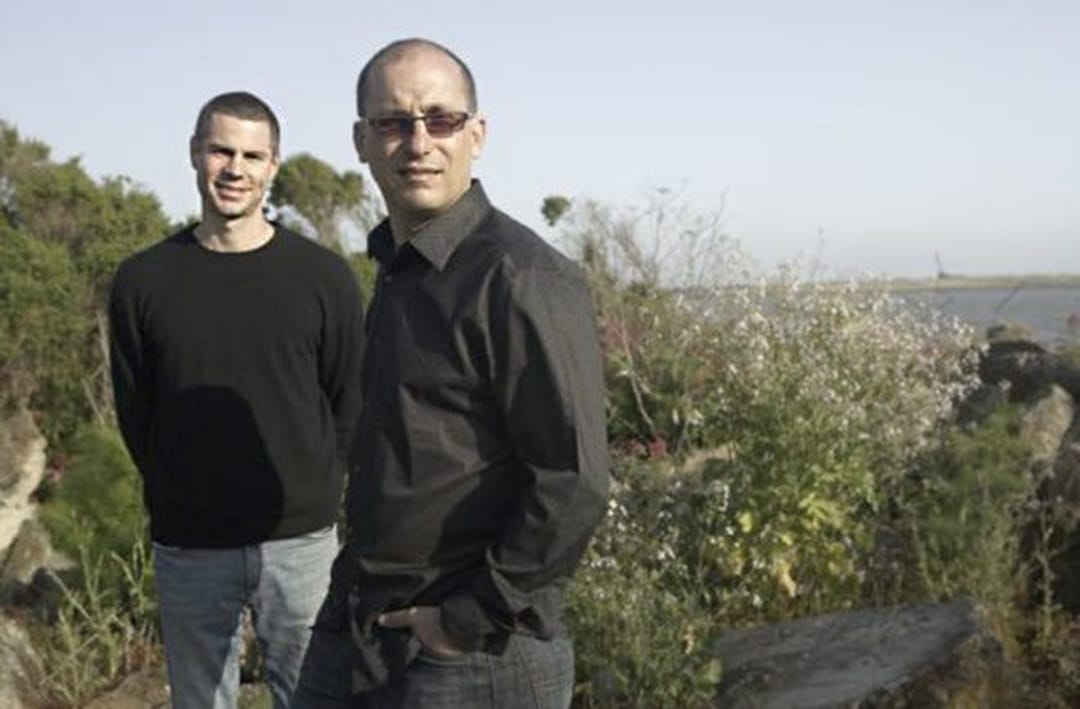

Wildwasser, Paul Klee, 1934
How the Environmental Movement Can Find Its Way Again
by Charles Eisenstein | Mar 26, 2023
A central theme of my book on climate is that if we are to focus our attention on a single substance, it should be not carbon dioxide but water. Beyond greenhouse effects, water is crucial in the ways the world maintains conditions for life to thrive.
One function of water is as a vehicle of heat transport, part of the physiology of this living planet. Please watch this brand new animated video about how plants influence local and global temperatures through the movement of water.
This video, along with companion pieces on the biotic pump and hydrology, comes from an emerging understanding among many environmentalists that we have made a scientific, strategic, rhetorical, and political error by reducing the ecological crisis to climate, and the climate crisis to carbon. Earth is best understood as a living being with a complex physiology, whose health depends on the health of her constituent organs. Her organs are the forests, the wetlands, the grasslands, the estuaries, the reefs, the apex predators, the keystone species, the soil, the insects, and indeed every intact ecosystem and every species on earth. If we continue to degrade them, drain them, cut them, poison them, pave them, and kill them, earth will die a death of a million cuts. She will die of organ failure—regardless of the levels of greenhouse gases.
That is why, if I may be so bold as to make a prediction, that we will see increasingly dramatic derangement of weather patterns over the next few years. Indeed it has already begun. Floods, droughts, fires, anomalous heat, cold, wet, and dry at the wrong time of year will intensify—even in the absence of significant global warming. Such is already the case. I’m sure you’ve noticed. The weather has been weird the last few years; in some places, devastatingly so. Yet, global temperatures (according to the most reliable measure, satellite measurements of the lower troposphere) are about what they were in 2016. The overall trend since measurements began is definitely a warming trend (about 0.13 degrees per decade), but it has not been accelerating.
Herein lies the strategic error. Having hitched the environmental wagon to the global warming horse, what happens if the horse stops running? It won’t mean that our environmental problems will have been solved. It won’t mean the crisis has been averted, if temperatures stop rising. That is because the core of the crisis is not warming, it is ecocide—the killing of ecosystems, the killing of life.
The video and its companion videos illustrate clearly some of the ways this happens. Destroying soil and plant life, and all the other ecological actors they nourish and depend on, leads directly to flood-drought cycles that then get blamed on global warming. The complex, homeostatic feedback loops that maintain stability unravel. The loss of the Amazon can bring drought to Colorado. The loss of rainforests in Borneo and Sumatra might cause drought in China. The loss of the Congo causes floods in Nigeria. Everything is connected to everything else.
Calculating Our Way to Love?
I was hiking yesterday near my home in the Carter Preserve. Dead trees are everywhere. Almost all the oaks are dead. Elsewhere in the state, tracts of old-growth oak have been clearcut to make way for utility-scale solar farms. Let’s put that in quotes—“farms.” Conservationist and entomology professor Douglas Tallamy has this to say, in response to industry advocates who claim that the ecological benefits of solar “farms” outweigh the benefits of a forest.
“Cutting down an existing solar plant, which is a tree, in order to build an artificial one is just ridiculous,” he said. “It’s more than energy. Solar doesn’t feed a single bird, it doesn’t manage the watershed. The only ecological value is capturing energy from the sun, which is what plants do, but it’s not passing it on to rest of the food web. It’s the plants and animals around us that run the ecosystems that we all depend on. I know we want renewable energy, but we’ve got enough land that has already been leveled. Put the solar arrays on rooftops. Put them on all the destroyed properties we already have. Don’t cut down existing forests. It’s totally antithetical to the goals of conservation.”
What is the basis of industry’s argument that a solar “farm” is better than a forest? Carbon math, that’s what. They add up the sequestration numbers of a mature forest and compare it to the fossil fuel equivalent of the photovoltaic output. This is an extreme yet all-too-common example of what happens when we define “green” in terms of carbon dioxide. Further extremes are on the horizon. What happens if, as some think likely, carbon capture technologies reach economical feasibility? Already, carbon math sometimes brings perverse results, as with nearly useless carbon offsets. Carbon math vastly underestimates the ecological utility of forests, given the role they play in the water cycle and earth’s physiology. Inevitably, then, when carbon math defines “green,” the forests will suffer.
None of this is to say that greenhouse gas emissions are benign. The degradation of earth’s ecosystemic organs renders her less able to cope with changes in atmospheric gas composition. The additional thermodynamic flux through an already unstable system exacerbates existing instabilities. Moreover, from the living earth view, there are plenty of reasons to curtail fossil fuel development that have nothing to do with CO2 or methane. Stripmining, drilling, fracking, burning, offshore oil development, and so forth devastate ecosystems, poison whole landscapes, destroy habitat, acidify rain, contaminate water, and risk catastrophic spills.
The solution, though, is not to shift industrial civilization to another, equally- or more-damaging, energy technology. We have instead to consider matters of scale and purpose. Scale: rooftop solar is different from utility-scale PV fields. Farm-based biogas reactors are different from industrial-scale monocrop biofuel plantations. Micro-hydro is different from mega-dams. In each case, the former fits into an ecological relationship to the specific beings, human and otherwise, of a place. As for purpose, do we really need to produce more and more energy forever? Does it really contribute to human well-being? Bigger houses, more weapons, more stuff, the whole developmentalist technological program that separates us ever-further from life and matter… what does it serve? Ultimately, the “solution” to the ecological crisis is not technical. It comes from reclaiming basic values and changing our relationship to nature.
Commenting on the clearing of forests to build solar arrays, Tellamy wrote, “It’s totally antithetical to the goals of conservation.” Yes. The environmental movement needs to return to its roots. Conservation does not mean to “use more slowly” or to “save for later.” What the word really means is to serve with. To serve together. To serve what? To serve life. It is a rhetorical error to frame environmentalism in any other way than to make it about love of nature, love of life. No one becomes an environmentalist because of all the money they will save. No one calculates their way into love. And the changes that we will need to make to restore earth’s aliveness from its current depletion will require a degree of courage and sacrifice that comes only from love. We will not be coerced or bribed into them.
A veteran activist once told me of a meeting he attended in the 1980s in which a group of leading environmentalists decided to adopt the term “sustainability” into their core lexicon. “We wanted to sound scientific,” he said. “We didn’t want to use words like ‘love’ or ‘precious’ and be dismissed as tree-huggers. We wanted to give people a rational, hard-headed reason why we should protect nature. We thought that appealing to the beauty and sacredness of nature wouldn’t reach the people who were destroying it, so we tried to make it about their self-interest instead.”
Around the same time, global warming entered the awareness of the environmental movement, growing over the years to become its defining issue. At first, global warming (now called climate change) seemed a boon to the movement. Now we would be able to force corporations and governments to do the things we’d always wanted, appealing not just to sentiments about nature’s magnificence, and not just to concerns over the health of some subset of people downwind, but to the survival of civilization itself. One no longer need be a nature lover to support the aims of environmentalism.
Let that last statement sink in. One no longer need be a nature lover to support the aims of environmentalism.
The result is that environmentalism has been hijacked by people and institutions who are not nature-lovers. We see where it leads: nature dies in the service of “sustainability.” Forests are cut for solar farms. Landscapes are sacrificed to pit mines to extract lithium, cobalt, silver, rare earths, etc. for decarbonization. There is an awful lot of money in the sustainability industry. It is the same story as before. Meanwhile, we neglect the priorities that are highest from the Living Earth perspective. The energy and funding and attention goes toward “saving the world” by reducing CO2. Neglected in comparison are the sea grass meadows. The peat bogs. The mangrove swamps. The beavers. The elephants. The whales. The sharks. Yet all of these are vital to planetary physiology.
Three Priorities for Environmental Healing
All is not lost. There is in fact a way to “save the world.” I put it in quotes, because ultimately the choice we face is not about our survival, it is about what kind of world we choose to live in. One vibrant with life? Or a gigantic strip mine / waste dump / parking lot? So let us say instead, there is a way to regenerate a world vibrant with life. The way is to enact a reverence for life in all its forms. This translates to three priorities for environmentalist attention and funding.
The first recalls traditional conservationism. We must absolutely protect any remaining intact ecosystems from development, whether it is for oil & gas, minerals, lumber, ranching, suburbs, dam reservoirs, industrial-scale fishing, or biofuels. The few remaining intact organs of Gaia are its reservoirs of biodiversity and its memory of health. Note well that to “protect” does not usually mean to fence off and keep humans away. In fact, right human participation can enhance the health of ecosystems when those humans have intimate understanding and reverence for the places where they live.
The second priority is regeneration: the restoring of life to places where it has been depleted. Regenerative farming and ranching, agroforestry, marine preserves, beaver reintroduction, salmon reintroduction, dam removal, and water retention landscapes are just some of the ways to revitalize the organs of the earth and bring them back online to stabilize the climate.
The third priority is detoxification. I suspect a lot of forest death (it isn’t just oaks) and insect collapse (in most places, at least 80% of insects have disappeared) is due to the ubiquity of herbicides, pesticides, toxic waste, and other pollution in the environment. It shocked me when I learned that vast areas of forest in the eastern United States are routinely sprayed to “control” pest insects. Dioxins, PFAs, antiobiotics, pharmaceutical residues, and agriculture chemicals contaminate every ecosystem on earth, every animal, every cell. They are detectable even in Antarctica. Add to these the aerial spraying of aluminum and other particles in geoengineering experiments, causing elevated levels of aluminum in place remote from any industrial source. And let’s not forget the little-recognized impact of electromagnetic pollution, light pollution, and noise pollution on ecosystems. All of the above harm earth on the tissue level, further weakening her already compromised organs.
I do not worry that our system is not sustainable. I worry that it is. I am afraid that we can continue to lay waste to the living earth, indefinitely, ending up on a concrete world, so chronically ill physically and mentally that we must incorporate technological assistance into our very brains and bodies. I am afraid we will compensate for the lost connection to a living world with a burgeoning array of virtual substitutes, digital realities, and online adventures, tragically seeking something that we come to forget we ever had. Do you remember how loud the frogs were? Do you remember flocks of birds extending from horizon to horizon? Do you remember the clouds of fireflies that lit up the nights of my father’s youth? I am afraid we will forget we ever lived in such wealth and make do instead with Mario Cart. We are already far down this path to a concrete world, and far down the path of learning to cope with it. American doctors write every year around 120 million prescriptions for SSRIs, 118 million prescriptions for Adderall, Ritalin, and other ADHD medications, and 120 million for benzodiazepines.
That’s more than one psychiatric drug prescription per capita! No wonder people have never been happier.

Art credit: Jazminn Caballero
The inner desolation mirrors the outer. The ecological crisis and the spiritual crisis that we call “mental health” share a common source: denial of earth as a living being, worthy of love, worthy of service. The conservationist draws from a well of truth: that the purpose of a human being is to participate in the flourishing of life. To serve with. Sundered from that purpose, we inevitably become sick. That inner sickness, that soul sickness, reflects the outer sickness of ecosystems. Could there ultimately be any doubt that the global climate reflects the social climate, the political climate, the economic climate, and the psychic climate?
The three priorities I listed above are no mere technical tweaks to the project of engineering earth. They occur naturally to anyone who beholds earth as a living being with a complex physiology. Beholding earth as a being, a magnificent being, a gorgeous being, a sacred being, we fall ever deeper in love. Here is where to find again the soul of the environmental movement and fulfill its destiny to transform




